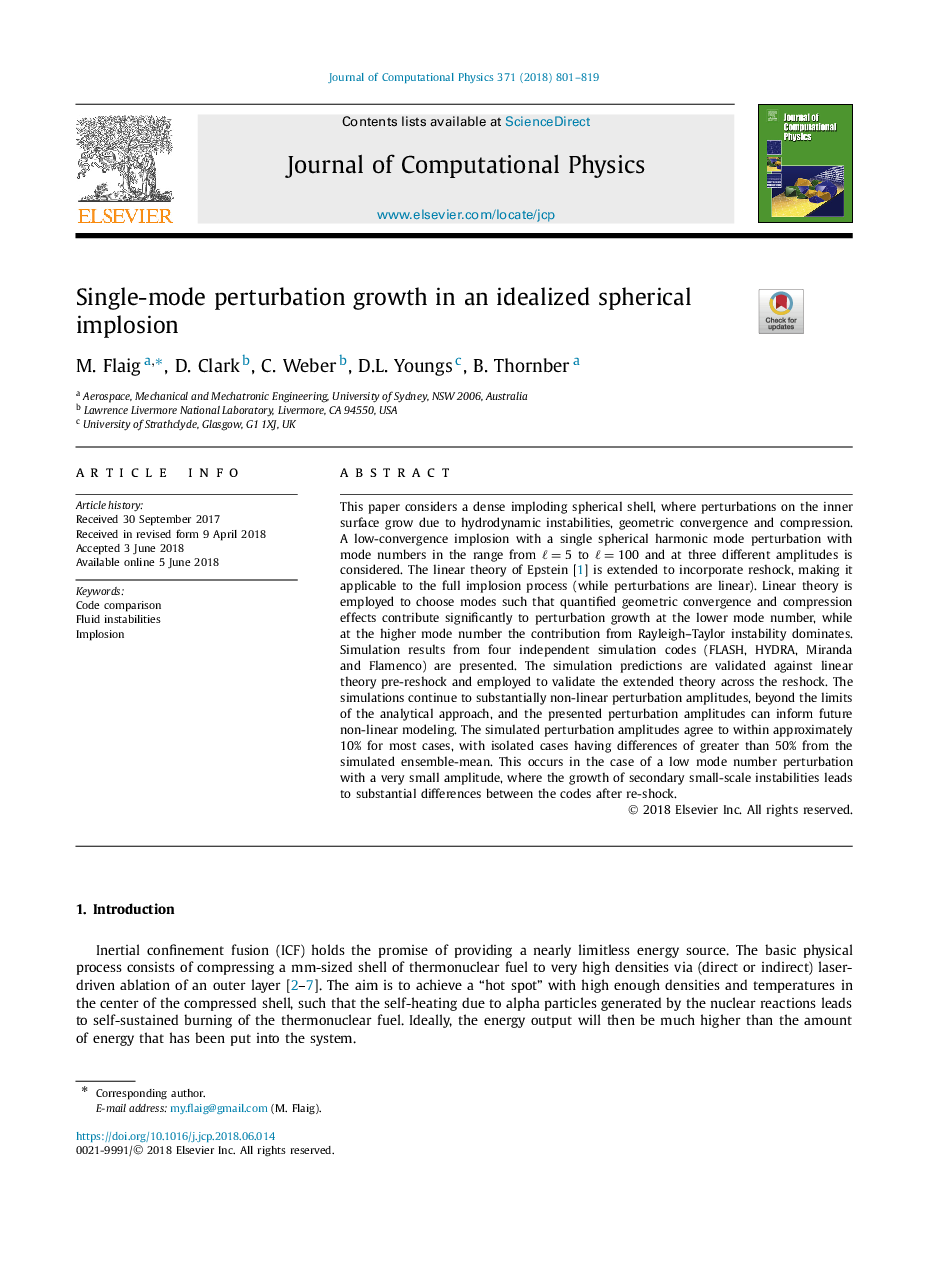| Article ID | Journal | Published Year | Pages | File Type |
|---|---|---|---|---|
| 6928696 | Journal of Computational Physics | 2018 | 19 Pages |
Abstract
This paper considers a dense imploding spherical shell, where perturbations on the inner surface grow due to hydrodynamic instabilities, geometric convergence and compression. A low-convergence implosion with a single spherical harmonic mode perturbation with mode numbers in the range from â=5 to â=100 and at three different amplitudes is considered. The linear theory of Epstein [1] is extended to incorporate reshock, making it applicable to the full implosion process (while perturbations are linear). Linear theory is employed to choose modes such that quantified geometric convergence and compression effects contribute significantly to perturbation growth at the lower mode number, while at the higher mode number the contribution from Rayleigh-Taylor instability dominates. Simulation results from four independent simulation codes (FLASH, HYDRA, Miranda and Flamenco) are presented. The simulation predictions are validated against linear theory pre-reshock and employed to validate the extended theory across the reshock. The simulations continue to substantially non-linear perturbation amplitudes, beyond the limits of the analytical approach, and the presented perturbation amplitudes can inform future non-linear modeling. The simulated perturbation amplitudes agree to within approximately 10% for most cases, with isolated cases having differences of greater than 50% from the simulated ensemble-mean. This occurs in the case of a low mode number perturbation with a very small amplitude, where the growth of secondary small-scale instabilities leads to substantial differences between the codes after re-shock.
Keywords
Related Topics
Physical Sciences and Engineering
Computer Science
Computer Science Applications
Authors
M. Flaig, D. Clark, C. Weber, D.L. Youngs, B. Thornber,
